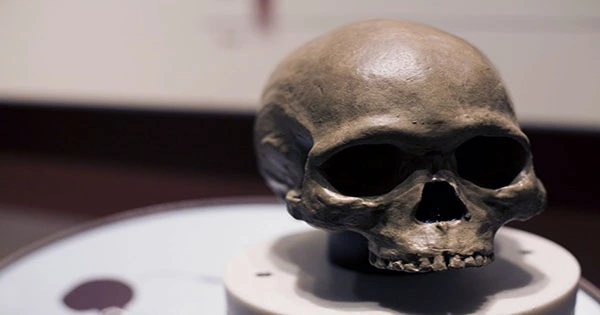A child’s tooth discovered in a cave in France is the earliest known evidence of modern humans in Western Europe, implying that our species lived there at least 10,000 years earlier than previously assumed. Modern humans lived in Western Europe at least 54,000 years ago, according to the dental fragment. Prior to this discovery, evidence suggested that modern humans first arrived in Europe roughly 43,000 years ago.
A new study published in the journal Science Advances details the extraordinary discovery made by an international team of experts. The discovery was made in the Rhône Valley of southern France, in a cave known as Grotte Mandrin. This rock shelter was believed to have once been home to groups of both Homo sapiens and Neanderthals, our extinct “cousins” who arrived to Europe long before our species did. However, a closer examination of the cave’s remnants has revealed that the story is far more complex and intriguing than previously assumed.
Within the cave’s 12 archaeological layers, dental remains of at least seven different individuals were discovered, each layer indicating a different historical period. Six of the people were Neanderthals, but one was a fossil molar from a modern human kid dating from around 54,000 years ago, according to the researchers. They were also the finding of stone tools from the distinctive Neronian industry, which was typical of the nearby Rhône Valley, in addition to human dental remains.
Not only is the age of the child’s teeth intriguing, but the human bones were discovered in a layer wedged between the Neanderthal strata, which is also intriguing. Researchers have suspected for a long time that Grotte Mandrin was a meeting point for Neanderthals and modern people, given their close proximity. Given how widely humans and Neanderthals interbred, it’s not unreasonable to suppose that inter-species mingling occurred here.
However, a new study reveals a clear overlap between the two species, with both Neanderthal and modern human groups replacing one other in the same location multiple times. The researchers believe climatic change may have played a role in the extraordinary switching and swapping of Neanderthals and humans. Whatever the reason, the new study is guaranteed to spark debate regarding humanity’s migration to Europe and the significance of this chapter in our history.
Professor Chris Stringer, study author and Research Leader in Human Evolution at the Natural History Museum in London, told IFLScience, “The new evidence from Mandrin adds to a growing picture of multiple dispersals of early Homo sapiens into Neanderthal territories in Europe prior to 40,000 years ago, at different times and using different technologies.”
“These ostensibly transient jobs did not last long, and climate change may have played a role in their demise. At Grotte Mandrin, there is a sterile layer above Layer E, indicating that it was abandoned after early modern human occupation – presumably a period of unfavorable conditions pushed both populations away, and only the Neanderthals returned, “He clarifies. “The discoveries at Grotte Mandrin will stoke debates about early genetic and cultural contacts between Neanderthals and these pioneering modern human groups, as well as attempts to map possible dispersal routes from western Asia to the Rhône Valley along the northern Mediterranean coast, involving sites in Turkey, Greece, Italy, and southern France,” he said.















